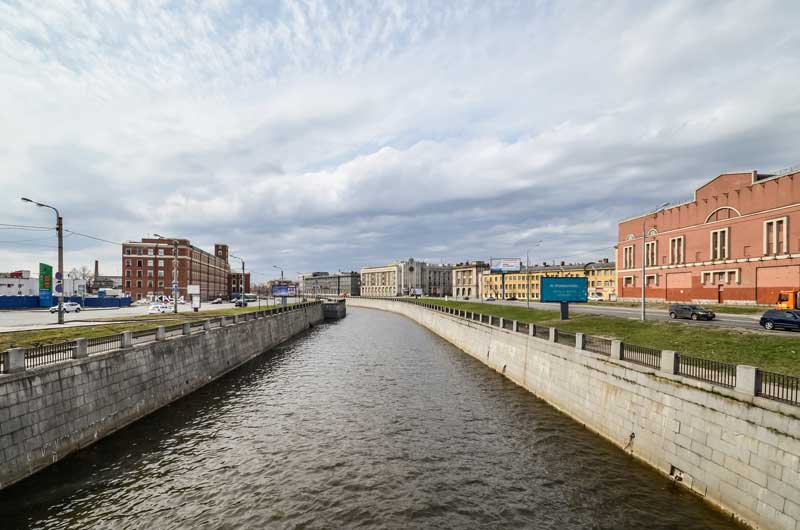
Founded in the eighteenth century by Tsar Peter the Great, St Petersburg is one of the younger cities of Russia, built to be the new capital, but stripped of the title in 1918 after the Russian Revolution of 1917. It was also stripped of its original name at the beginning of the First Great War, when it was renamedPetrograd in 1914, as it sounded less German. It was again baptised Leningrad in 1924, after the death of Vladimir Lenin and finally, got back its original name St. Petersburg in 1991, after the breakup of the Soviet Union. Nevertheless, the8 km longObvodny Canal is the longestcanal in the City of St Petersburg and it was assumed that the city would not grow beyond it. Till the beginning of the 19th century, it served as the southern limit of the city, but by after the Industrial Revolution, it became a shallow sewer.
During that time, many new factories and business houses were constructed just outside of the historic city and the city grew significantly due to the influx of new workers from the countryside. Since then, the Obvodny Canal became the border between the nice part and the not so nice partof Saint Petersburg, where people belonging to the poor working class lived. However, lots of buildings, both civil and industrial, were built along the canal, which are of importance to the architectural history of St. Petersburg.The canal is lined with granite and traversed by more than 21 bridges, out of which six are pedestrian.

Since its inception, the canal has had several dark and sinister stories around it and it earned a new name, the Suicide Canal. It is said that during its construction, strange events have surrounded the site, including construction workers complaining of acute unexplained pain in their limbs, aggressive headaches, even unprecedented and sudden outbursts of violence among the workers that often ended in casualties for no apparent reason. Nevertheless, despite those strange and unfortunate events, workers were ordered to carry on and complete the canal.Upon further digging, the workers uncovered mysterious granite plates that could have been ancient tombs.
Although the local archaeologists wanted to study the tombs and make a few quick sketches, they were denied permission as that would slow down the progress and the tombs were destroyed to continue the project without any delay. However, soon after the incident, an unprecedented spree of suicide began and the Borovsky Bridge over the canal became the preferred point of suicide, which would later be dubbed Suicide Bridge.

While lots of people gave their lives untimely in the canal for unknown reasons, those who were saved claim that they do not have any idea why they jumped in the canal. Some seemed disoriented and confessed that they felt as if a tremendous invisible force pushed them into the water. However, some claim the force comes from restless souls lurking beneath the water, even claiming to see a woman in white floating just beneath the surface, inviting the person standing on the bridge to accompany her, before suddenly disappearing.
It is said that some even threw their infant children into the murky waters. It was rumoured that the canal has a hypnotising effect that irresistibly invites persons getting too close to it.

Some claim that, it is not only the canal, the city itself is cursed, which caused its several misfortunes, including its acute sufferings during the Second World War, when it was sieged for a prolonged period. According to local legends, due to some unknown reasons, sometimes in the past, the Swedish knights massacred women of the small tribes in the area, who were buried in the place where the Obvodny Canal was subsequently dug. It is the curse of those shamans, who supposedly had a connection with the evil spirits and were killed by the knights.

However, it is also argued that the people living on the other side of the canal were very poor and had to face the hard realities of life. As the Government provided little or no support for the newly forming proletariat, thousands were left in absolute poverty and opted to commit suicide by jumping into the canal. While bodies were recovered from Obvodny Channel weekly, it all became particularly strange and weird due to unconfirmed reports of ghostly figures of hooded men that were seen around places of suicide.
